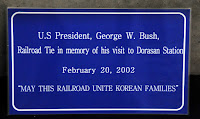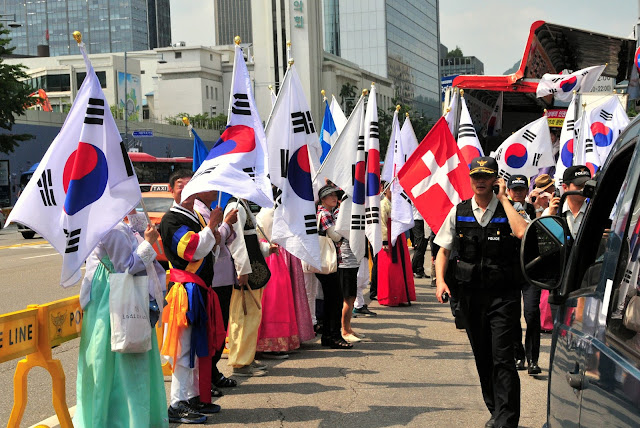Jeong is the ferment and cement of relationships.
-Mi Mi AHN
-Mi Mi AHN
It's been defined as a combination of compassion, empathy, and bond on a very soulful level. It is a connection that is formed between persons. Example pseudo-Korean phrases are: "That person's 정 is deep," "He has no 정," or "We live and die according to 정."
Jeong in English
정 in Korean
情 in Chinese
If you look up the Chinese character on GoogleTranslate, 情 is Love. "Heart" (忄) is the guiding radical on the left side. (靑) on the right, can be originally translated as "growth of plants" though it means "blue" or "green" today. This connotes depth, and things abiding for a long time.
Maybe one could hazard "emotional habits that lead to growth" as a working definition?
To define Jeong is perhaps as frustrating as trying to define God. You think you've got a handle on it, and then it evaporates like water.
And yet, I am told, to dismiss Jeong is to overlook crucial deep-structural supports of the Korean character and psyche: the invisible and lasting bonds that bind people to each other ... in sickness, health, poverty, luxury, life and death.
Please allow an introduction. AHN, Mi Mi is the Summer Coed College Coordinator at Ewha Womans University in Seoul. A reader of this blog, she suggested that if my non-Korean readers wanted a deeper understanding of Korea and its people, a treatise on Jeong is in order.
 |
| Mi Mi AHN |
I learned about Jeong from my grandmother. And she never "taught" me. Jeong is not something you learn formally. It's heart-to-heart learning, immersion-education.
I was raised by my grandmother for two years (years 4-6), as both my parents worked. We lived in a two-house arrangement, with a garden. There was the front house, where we lived, and the back house, where our neighbors lived. Our two families always shared food, watched each other's house ... we were like a single family. When an elderly grandmother in the back house died, we had a funeral together, like as a family.
Even now, when I visit my grandmother, we talk still about the "Back house Grandmother." I learned Jeong through watching and observing.
When I was in elementary school, she continued, if we moved to a new neighborhood or apartment, it was expected that one began a Jeong kind of relationship with neighbors by taking a large amount of Tteok, or rice cakes, around to one's neighbors. It was just what you did. There were no rules or anything. Acts like these had a different governance.
Jeong is "giving and taking heart," she continued. It is "wanting to give more." A "welcoming space." It is your joy to practice Jeong. Your heart leads you to it. It is a practice that happens in the present moment, always present tense.
A married couple builds up Jeong through their years of marriage. You come to know each other inside and out, the good and the bad. Jeong is that state being tied, bonded, and knotted together.
Jeong is the ferment and the cement of relationships.
Mi Mi recommended showing you a series of commercials by the Orion Food Company, for its Choco Pies. This company puts the Chinese character for Jeong right on the package.
Enjoy these commercials below. While English-speakers may not understand everything, it you turn on your "Jeong" - your "emotional intelligence" - I think you'll understand.
Here is Orion rolling out its 情 packaging:
Jeong is inter-generational, surviving death.
Jeong bridges distance ... generations...
And relationships:
Pass the Cheong around!
My own Jeong experience came home to me only while talking with Mi Mi. Five weeks ago, at the Temple Stay, the famous actor practiced Jeong with me before I knew what was happening.
Surprised, by Jeong.
Surprised, by Jeong.
Other reading or references:
1. 2014 Korean movie "Ode to my Father" that depicts Jeong
2. A skeptical Westerner's blog on Jeong
4. A very helpful 3-page academic paper on Jeong in Korean Culture and Psychotherapy






































































